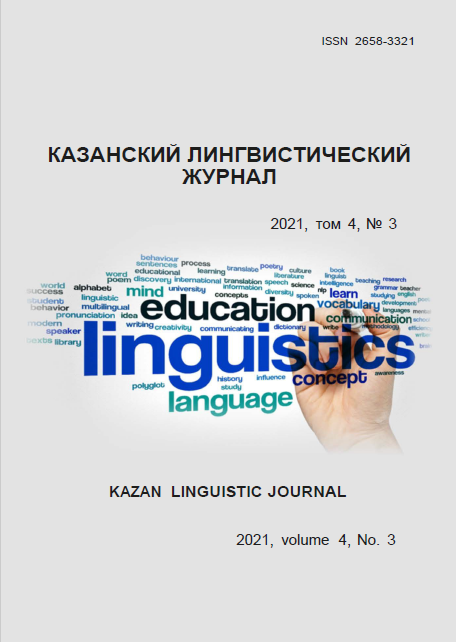Ornamentalism: variants and variations in the turkic-language literatures
https://doi.org/10.26907/2658-3321.2021.4.3.327-340
Keywords:
ornamentalism, Tatar literature, Turkic-language literature, M. Magdeev, R. Otarbayev, S. Aflatuni, Sh. AbdullayevAbstract
We have tried to trace the history of ornamentalism as an independent artistic and stylistic unit in Tatar literature in the context of Turkic literatures. The formation of such an artistic phenomenon in Tatar literature occurred in the second half of the twentieth century. The creativity of M. Magdeev put forward this style as a new phenomenon, having managed to create a certain symbolic image of the Tatar world order. His ornamental style, in fact, has become a model of mythologizing writing. M. Magdeev raises the philosophy of longing for the past of the Tatar village to the level of affirming the importance and significance of national values in the history of the Tatar people and their daily life.
The story of the Kazakh prose writer R. Magdeev is close to the work of M. Magdeev. Otarbayeva's «The Lament of Genghis Khan» is based on a synthesis of romantic and modernist techniques in order to recreate a special ethno-cultural spiritual reality. The prose of the Uzbek novelist Sukhbat Aflatuni (E. Abdullayev), his «Tashkent Novel» are also focused on the mythologization of Tashkent and Asia in general. But, unlike the work of the Tatar prose writer, in whom the depicted picture of the world arises through the prism of a strong author's emotional assessment, Aflatuni's artistic reality is passed through an esoteric and fabulously stylized view of existence. «Stylized writing» in this case, despite the presence of well-thought-out storylines, epically worked-out heroes, recreates a sense of closeness to essay studies, to the genre of «naser», pointing to all new reading possibilities, achieving a "flicker of meanings".
In the work of the Uzbek prose writer Sh. The mythologization of the Central Asian landscape, as a Tatar village by M. Magdeev, comes to the fore. If the Tatar prose writer's memories are led by events and people, then Abdullayev's two-living force of narrative is the change of sounds, smells, images. As a result, the style-forming feature of his prose becomes «associative writing».
All these examples point to the existence in the Turkic-language literatures of various versions of ornamentalism as a way of artistic expression, which allows us to comprehend the text as a collection of semantic possibilities that embody the depicted reality.
References
References
Schmid V. Narratology. M.: Yazyki slavjanskoj kultury; 2003. (In Russ.)
Zalomkina G. Approaches to understanding slow writing: The poetics of the gap in the texts of Sh. Abdullaev, A. Dragomoshchenko, A. Ulanova // Poetics of the frame and the threshold: Functional forms of the border in artistic languages. [The border and the experience of the border in the artistic language. Issue 4]. Samara: Izdatelstvo “Samarskij Universitet”; 2006. (In Russ.)
Magdeev M. We are children of 41 years // Selected works. In 3 volumes. Volume 1: Novellas. Kazan: Tatars. kn. ed. 1995; 7–133. (in Tatar)
Shklovsky V.B. Ornamental prose. Andrey Bely. On the theory of prose. Moscow: “Izd-vo Federazija”. 1929; 189–232. (In Russ.)
Otarbayev R. The Lament of Genghis Khan. The story. Stories. Translated from Kazakh. G. Pryakhina. Moscow; 2019. (In Russ.)
Abdullaev Sh. The other south. Moscow: Nosorog; 2020. (In Russ.)
Zatsepin K.A. Essay as a communicative form: problems of reading (based on the material of modern essay studies): Diss. ... candidate of Philological Sciences. Samara; 2006. (In Russ.)
Galiev M. Poetry of the spirit. Per. from Tatar. G. Khasanova et al. Kazan: Tatars.kn. ed.; 2014. (In Russ.)






